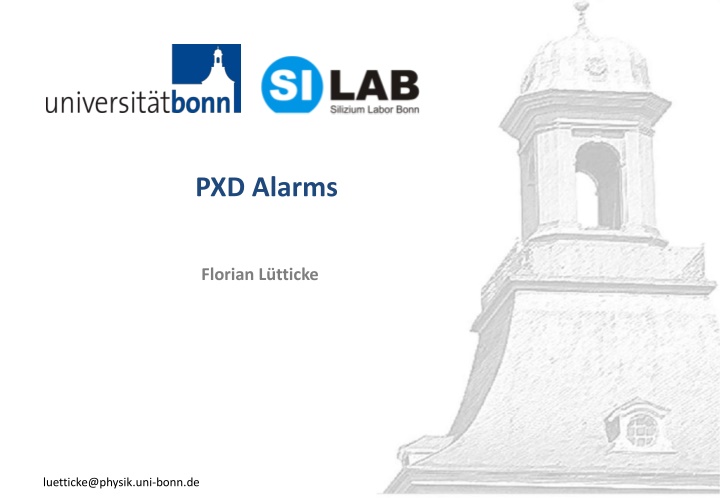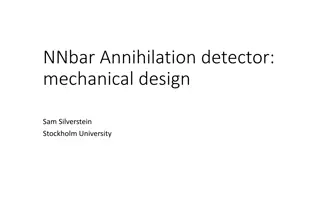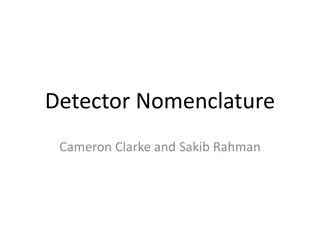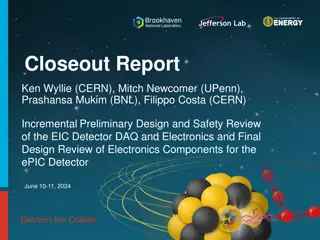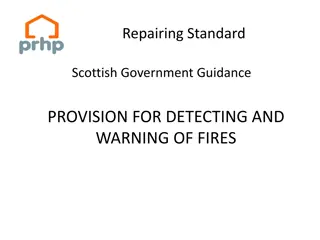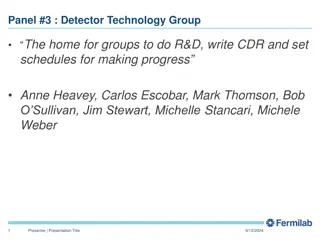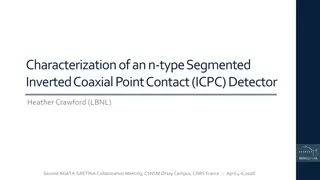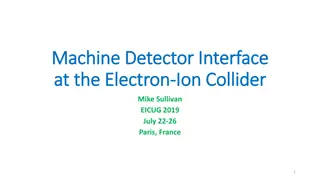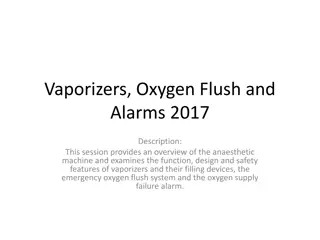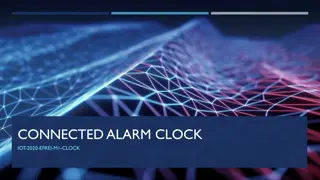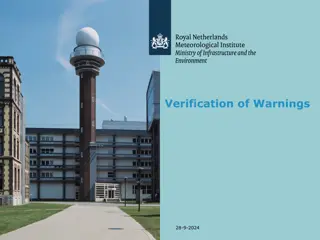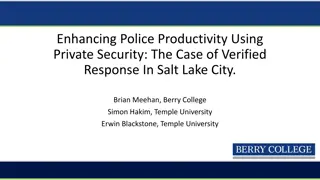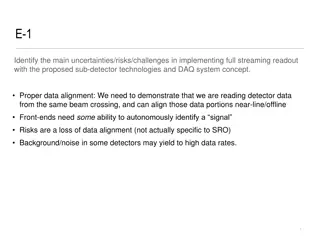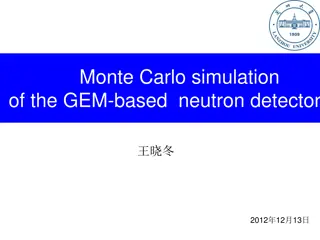PXD Alarms in Detector Operations
PXD alarms play a crucial role in maintaining the safety and data quality of the detector system. Major and minor alarm definitions, alarm reasons, and shifter responsibilities are discussed in detail. Learn about system safety, data quality issues, and the importance of monitoring alarms for detector operation.
Download Presentation

Please find below an Image/Link to download the presentation.
The content on the website is provided AS IS for your information and personal use only. It may not be sold, licensed, or shared on other websites without obtaining consent from the author.If you encounter any issues during the download, it is possible that the publisher has removed the file from their server.
You are allowed to download the files provided on this website for personal or commercial use, subject to the condition that they are used lawfully. All files are the property of their respective owners.
The content on the website is provided AS IS for your information and personal use only. It may not be sold, licensed, or shared on other websites without obtaining consent from the author.
E N D
Presentation Transcript
PXD Alarms Florian L tticke luetticke@physik.uni-bonn.de
Sources https://stash.desy.de/projects/B2G/repos/pxd_sc_documents/browse/Alarm%20Definitions luetticke@physik.uni-bonn.de 2
What is an Alarm? Major alarm: A state which might be harmful for the PXD hardware OR might yield to bad data Not automatically recoverable Needs detector operation to stop immediately Needs (manual) shifter intervention Minor Alarm: Deviation from normal condition which do not directly Needs shifter intervention (perhaps at next run stop) Does not need detector operation to stop. Example: Loosing a link to the DHP NOT AN ALARM: Script for automatic link recovery needed. Automatic link recovery can t recover link What should the shifter do? luetticke@physik.uni-bonn.de 3
Alarm Reasons System safety Environment sensors Component power supply issues (Primary PS, DHH power/temp, ONSEN power/temp) -> Major alarms PXD Voltages ( anything in voltage limit, strange currents etc.) -> Major and Minor alarms Data quality Data transport luetticke@physik.uni-bonn.de 4
Alarm Reasons System safety Data quality -> Mostly Minor alarms, should come from Express Reco or BonnDAQ Raw data differs from uploaded pedestals Common mode is large High occupancy -> Major alarm when extremely high! (unmasked) Hot pixels -> Major if many or strange pattern appears Cluster signal differs from expectation Frame size (bytes or hits) Number of frames vs number of triggers Data transport luetticke@physik.uni-bonn.de 5
Alarm Reasons System safety Data quality Data transport DHP->DHE DHE->DHC DHC->ONSEN DATCON->ONSEN HLT->ONSEN FTSW(Trigger)->DHC ONSEN->EVB DHH Internal links ONSEN Internal links DATCON Internal links Trigger missmatches, full buffers, crc errors, Either automatic correction or Major Alarm luetticke@physik.uni-bonn.de 6
Minor Alarms Use as reminder of what the shifter has to do before the next run starts. E.g.: Pedestals need to be refreshed Noisy pixel need to be updated For Pedestals: We should implement an alarm which already tells if taken pedestals are ok Kind of an expert system judging the calculated pedestals and giving advice to the shifter. Pedestal too low/high Increase gate_onX or Increase SubIn/SubOut Redo Offsets luetticke@physik.uni-bonn.de 7
PXD Voltages - Alarms Major Alarm on too high/low DCD voltages, DHP voltages Minor Alarm on Source current (could be due to radiation damage) Which alarm for steering voltages? (Major?) luetticke@physik.uni-bonn.de 8
TODO: This is just a start. We need to define individual alarms. Alarms should have a solution hint , which the shifter could try. luetticke@physik.uni-bonn.de 9
